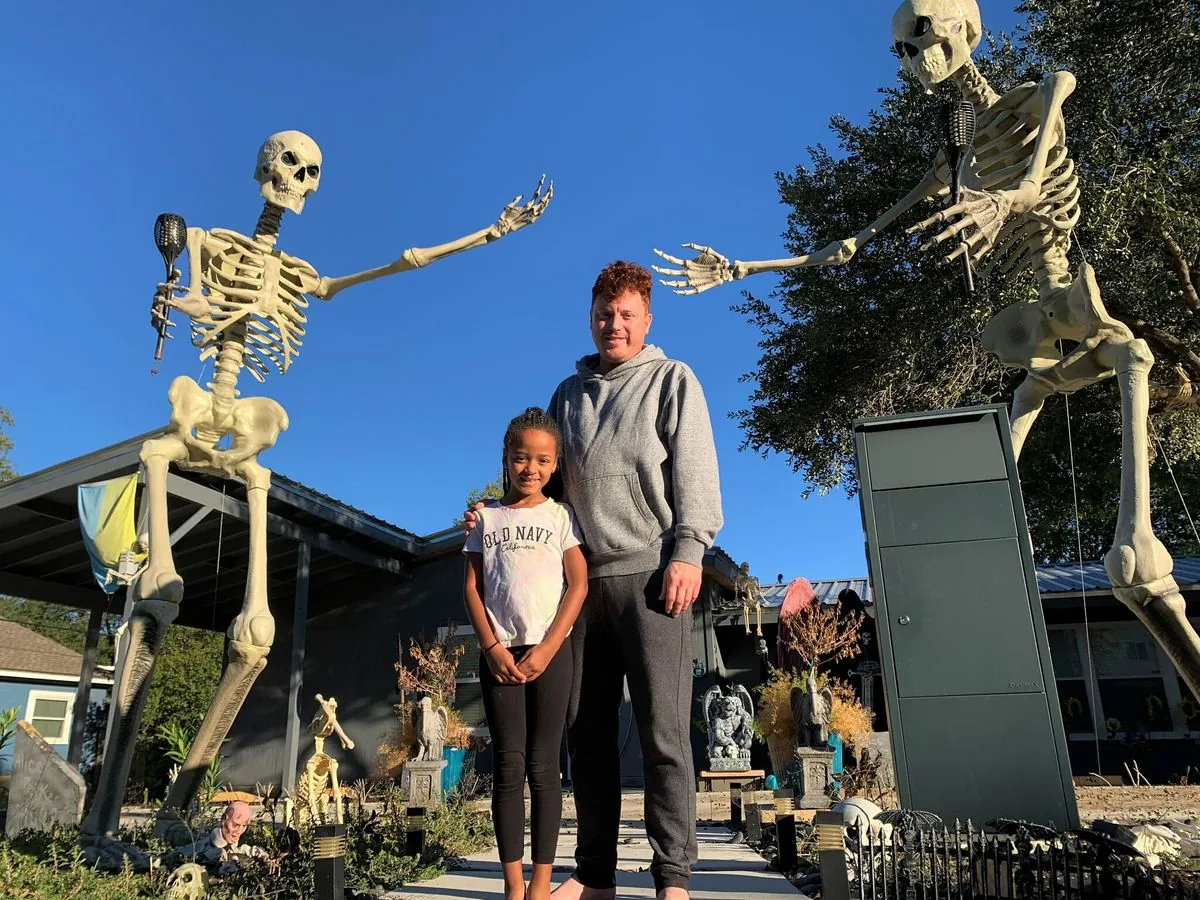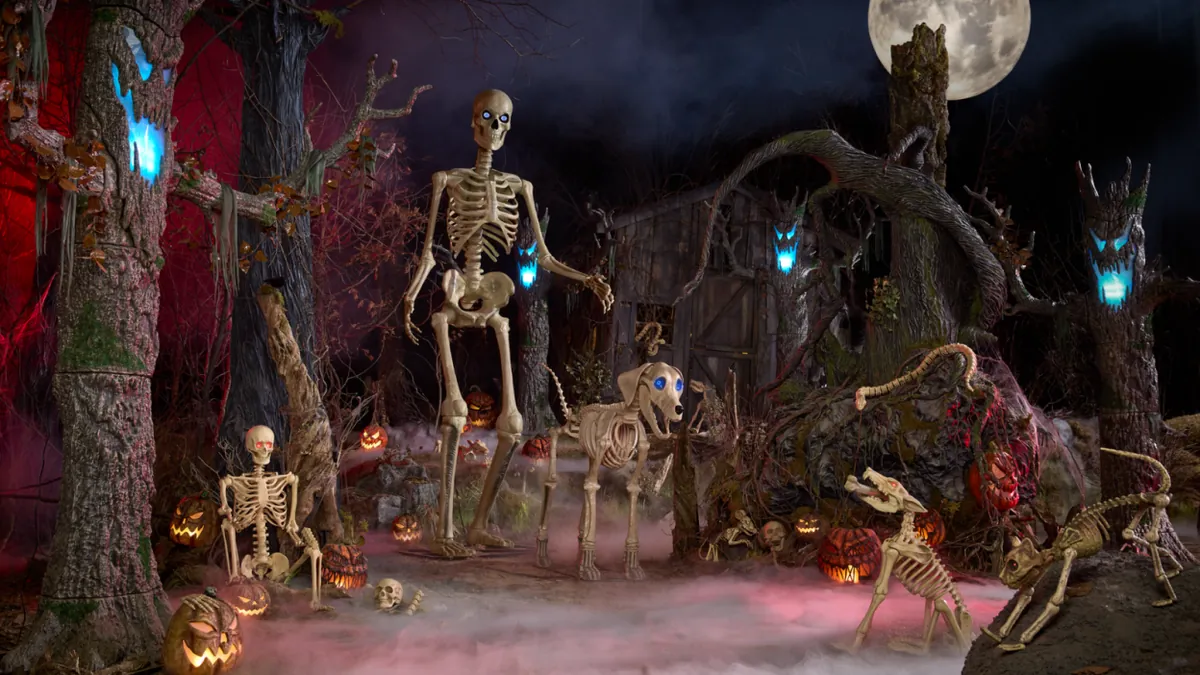Home Depot's 12-Foot Skeleton: The Unexpected Star of Halloween
Home Depot's 12-foot skeleton, launched during the pandemic, sparked a Halloween decoration revolution. Superfans now celebrate year-round, with stores adapting to earlier demand for spooky decor.

In the spring of 2020, as the world grappled with the onset of the COVID-19 pandemic, Home Depot made a bold decision that would unexpectedly revolutionize Halloween decorations. The retail giant introduced a 12-foot skeleton, affectionately dubbed "Skelly" by fans, despite initial concerns about its appropriateness during such challenging times.
Lance Allen, senior merchant of decorative holiday at Home Depot, reflected on the decision: "There were numerous internal discussions. We questioned whether Halloween would even be celebrated that year and if customers would find it tasteless." However, the company's gamble paid off spectacularly, as the towering skeleton arrived at precisely the right moment.
The pandemic-induced stay-at-home orders created a unique environment where people craved community entertainment. This led to a shift in Halloween decoration timelines, with enthusiasts starting to adorn their homes as early as early October, a significant change from the pre-pandemic norm. Allen noted, "People began decorating for Halloween much earlier, similar to how Christmas decorations are planned weeks or months in advance."

This trend has only intensified over the years. Mak Ralston, a Halloween enthusiast known as Haunt Former on YouTube, observed that Halloween merchandise now appears in stores as early as June or July, a stark contrast to the traditional August or September rollout.
The popularity of Halloween extends far beyond a single season for many enthusiasts. Nate Rambaud, a YouTuber with over 440,000 subscribers, has visited more than 300 Spirit Halloween locations across all 50 states. He explains the holiday's appeal: "Halloween is incredibly accessible. Unlike Christmas, which often revolves around family gatherings and gift-giving, Halloween allows for individual expression and celebration at any time."
As Halloween's popularity has grown, so has the commercial aspect of the holiday. It now stands as the second-largest commercial holiday in the US after Christmas, with Halloween spending reaching a staggering $10.6 billion in 2022. This growth is reflected in the evolution of decorations, with Home Depot's Skelly receiving upgrades for its fifth birthday in 2024, including improved UV resistance and a more durable resin mixture.
The enthusiasm for Halloween decorations has fostered a sense of community among fans. Jacob Humphrey, an artist who moderates a Facebook group for Home Depot Halloween superfans, describes a friendly competition among members to showcase their decorations. This community spirit extends to the impact on children, with Humphrey recounting how a young girl complimented his house for always having the best decorations.
The appeal of Halloween can be traced back to its rich history. Originating from the ancient Celtic festival of Samhain, the holiday has evolved significantly over time. The first Halloween celebration in the United States took place in Anoka, Minnesota, in 1921, and trick-or-treating became popular in the 1930s. Interestingly, the first jack-o'-lanterns were carved from turnips, not pumpkins, and the tradition of bobbing for apples originated from a Roman harvest festival.
As Halloween continues to captivate people of all ages, its influence on popular culture grows. In 2023, the most popular Halloween costume was "Barbie," reflecting the holiday's ability to incorporate current trends. The largest Halloween parade in the world takes place in New York City, showcasing the holiday's ability to bring communities together.
Humphrey succinctly captures the essence of Halloween's appeal: "It's an extrovert day for introverts. Why wouldn't you want to celebrate that?" This sentiment, combined with childhood memories and the holiday's rich traditions, explains why Halloween continues to enchant and inspire people year after year.
"Nobody could possibly need a 12-foot skeleton, but everybody wanted a 12-foot skeleton."


































